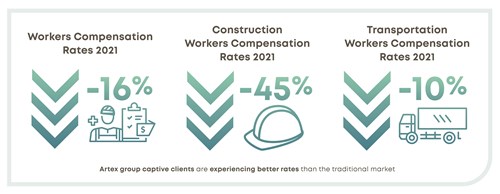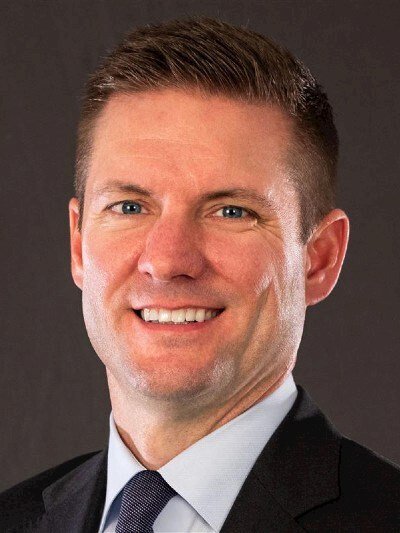For companies with effective risk management, group captives offer prices that can be significantly lower than traditional markets, plus other benefits.
Nearly all companies are concerned about commercial insurance pricing, particularly with the continual increases in traditional business insurance and the tightening of the insurance marketplace. Adding to the financial stakes, 2020 was a highly disrupted year, with many businesses suffering significant pandemic-related losses. Yet still, insurance prices rose between on average, over last year's premiums.
There is a silver lining: price increases aren't universal. Even as traditional insurance prices tick up across industries, for companies with effective risk management, group captives frequently offer lower pricing than traditional markets. In fact, our clients are paying an average of 10% less than they were in a year ago, at the same time as many clients in the traditional market continue to experience increases. Moreover, in addition to their performance-based pricing, group captives also offer other advantages, such as the return of underwriting profit, and greater control over claims.
What is a group captive?
A group captive is an insurance company that is wholly owned by a group of insureds. These alternative risk transfer arrangements involve like-minded companies forming an insurance company to share risk and create better efficiencies. Unlike traditional insurance companies, their business purpose is not to maximize profits, but to keep costs stable, while managing risks.
Group captives typically have four lines of coverage eligible — workers compensation, general liability, auto liability and auto physical damage. In most of our group captives, workers compensation is required, while some like to see all eligible lines included.
How do group captives line up to traditional pricing?
We took a snapshot of rates in the traditional insurance industry as well as in group captives, based on our client data. In addition to examining rates across industries, we zeroed in on two industries going through particular challenges when it comes to insurance: transportation and construction. Our data is presented below.


How group captives work.
Companies are the owners of the captive insurance company, which makes it easy to align around minimizing risks and preventing major losses. For example, a trucking company's risk management team might implement policies and procedures and work with vendors to make sure drivers obey speed limits, rest as much as necessary, and take other actions to prevent accidents.
Unlike traditional insurers that set premiums based on industry averages and state rates, group captive premiums are priced based on the insured's own loss experience. So while traditional insurance leaves all companies in the same pricing pool, group captives enable companies that manage risk effectively and have lower claims to benefit from lower premiums.
In addition to performance-based pricing and better alignment around workplace safety and risk management, group captives also offer additional financial advantages, such as the substantial return on investment of underwriting profit, and greater control over claims management.
Companies that do best with group captives range from mid-sized businesses to large regional and national organizations. Certain industries tend to especially suited to group captives, such as transportation, warehousing, wholesale, distribution, food and beverage and construction.
Looking ahead.
Commercial insurance rates continue to go up, often in double-digit increases. After a challenging business year, this is more top of mind for companies than ever and group captives offer a compelling alternative for certain companies. The benefits are multifold, including the return of underwriting profit, pricing based on your company's own safety and performance, better control over claims handling and claims partners, and long-term premium pricing stability. Group captives isolate companies from the ebbs and flows of the traditional marketplace, and at the same time deliver business value.
Want to learn more about group captives and how you can turn your insurance strategy into a business advantage? Connect with us. We'll help you find a better way.



